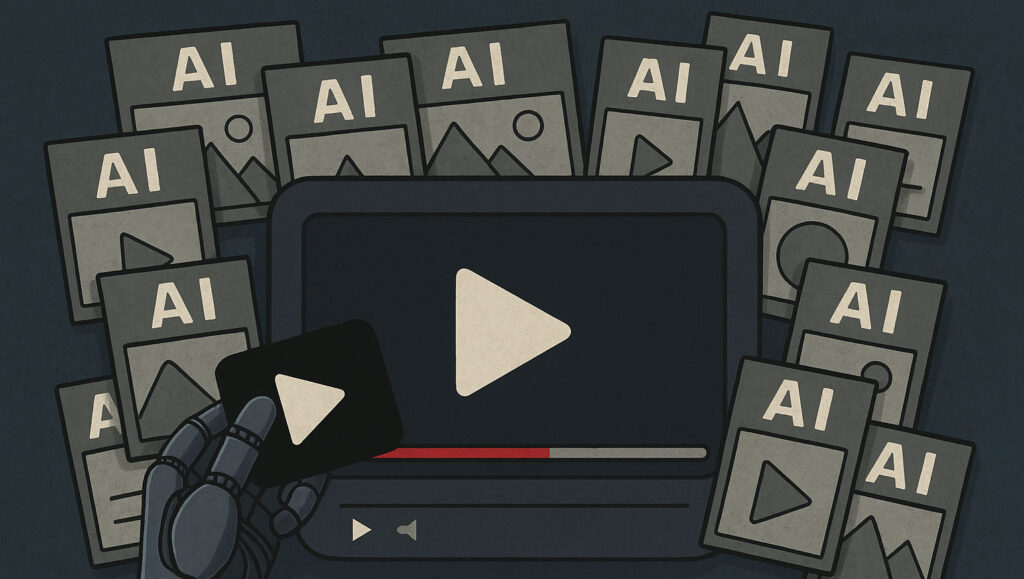YouTube has announced a significant update to its monetisation policy to address the growing issue of spam and low-quality videos, especially those generated using AI tools. The update comes under the YouTube Partner Program (YPP) and is aimed at discouraging content that lacks originality or human creativity. The new rules will take effect from 15 July 2025.

Focus on Original and Authentic Content
According to YouTube, the updated policy reinforces its long-standing requirement that content must be original and authentic to qualify for monetisation. While these rules aren’t entirely new, the platform is now sharpening its enforcement due to a recent surge in AI-generated videos—referred to as “AI slop.” These include hastily produced clips using stock visuals, synthetic narration, and repetitive formats.
Targeting Mass-Produced and Repetitive Content
YouTube’s latest policy specifically mentions efforts to “better identify mass-produced and repetitious content,” which makes it clear that automated and low-effort video uploads are in focus. This move is expected to filter out AI-driven spam videos that contribute little value but still attract high view counts.
Clarification from YouTube Officials
In a video update, Rene Ritchie, YouTube’s Head of Editorial & Creator Liaison, clarified that the changes are not meant to penalise creators who use content in transformative ways, such as reaction videos. “Mass-produced, repetitive content has always been ineligible for monetisation,” he said, adding that the update is mostly about aligning enforcement with existing policy.
Changes to Ad Category Settings
In addition to content rules, YouTube is also cleaning up its ad settings. From 15 July, the “Bare Skin (Image Only)” sensitive ad category will be removed from YouTube Studio. Creators using this setting will need to adjust their filters by 15 August, and are advised to switch to more specific categories like “Reference to Sex” for accurate targeting.
A Step Toward Content Quality Control
YouTube’s policy change is a direct response to the increasing volume of AI-generated videos that are crowding the platform and impacting overall content quality. The new rules are designed to protect both creators who produce meaningful content and viewers who seek value and authenticity.
These changes mark YouTube’s latest step in maintaining a fair and high-quality ecosystem amid the evolving landscape of digital content creation.
